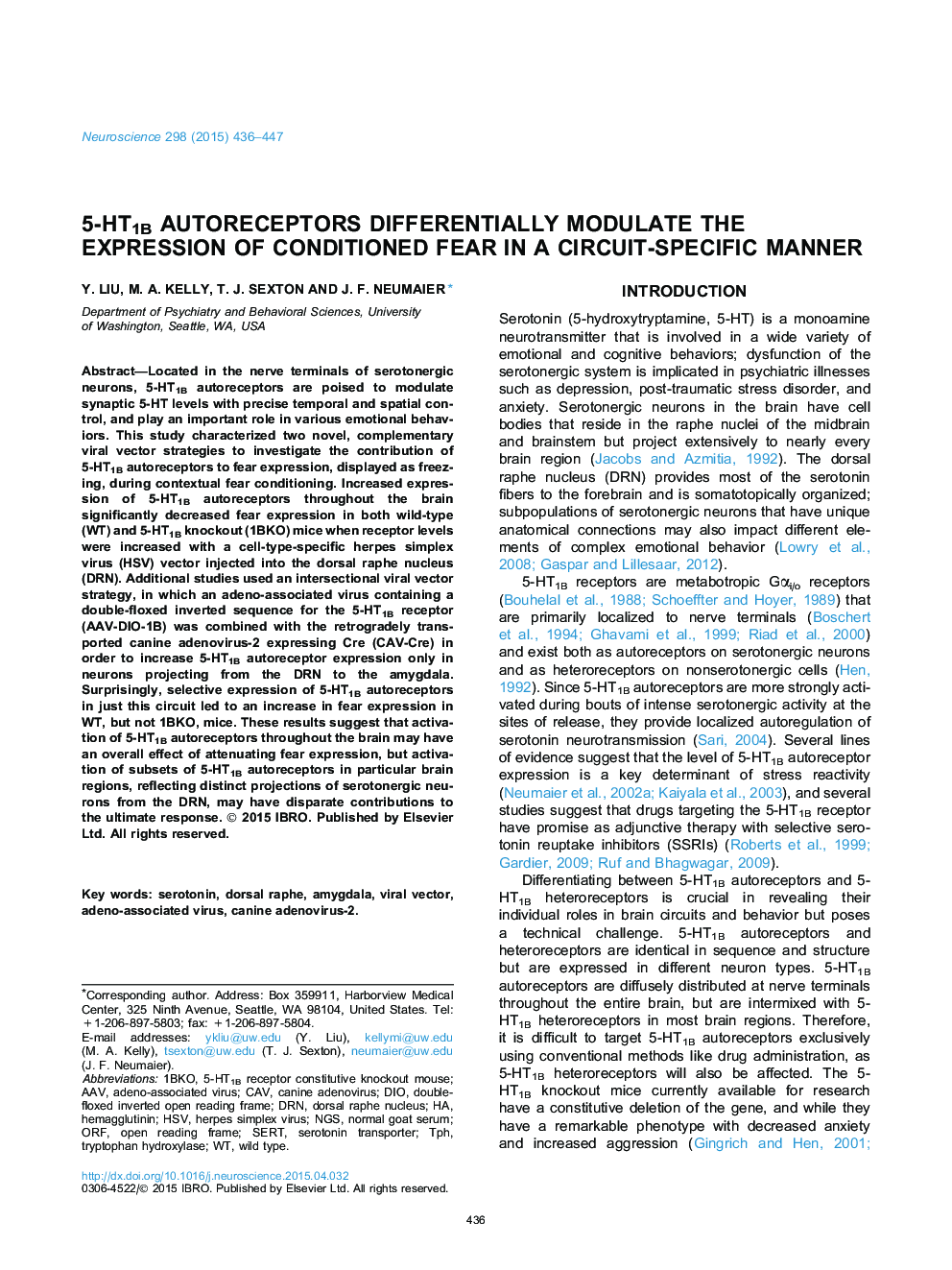| Article ID | Journal | Published Year | Pages | File Type |
|---|---|---|---|---|
| 6272531 | Neuroscience | 2015 | 12 Pages |
â¢Two novel viral vectors express 5-HT1B receptors in a cell-type-specific manner.â¢The effect of 5-HT1B autoreceptors on fear depends on the circuitry involved.â¢Increased levels of 5-HT1B autoreceptors in the brain decrease fear expression.â¢Increased 5-HT1B receptors in raphe neurons projecting to the amygdala increase fear.
Located in the nerve terminals of serotonergic neurons, 5-HT1B autoreceptors are poised to modulate synaptic 5-HT levels with precise temporal and spatial control, and play an important role in various emotional behaviors. This study characterized two novel, complementary viral vector strategies to investigate the contribution of 5-HT1B autoreceptors to fear expression, displayed as freezing, during contextual fear conditioning. Increased expression of 5-HT1B autoreceptors throughout the brain significantly decreased fear expression in both wild-type (WT) and 5-HT1B knockout (1BKO) mice when receptor levels were increased with a cell-type-specific herpes simplex virus (HSV) vector injected into the dorsal raphe nucleus (DRN). Additional studies used an intersectional viral vector strategy, in which an adeno-associated virus containing a double-floxed inverted sequence for the 5-HT1B receptor (AAV-DIO-1B) was combined with the retrogradely transported canine adenovirus-2 expressing Cre (CAV-Cre) in order to increase 5-HT1B autoreceptor expression only in neurons projecting from the DRN to the amygdala. Surprisingly, selective expression of 5-HT1B autoreceptors in just this circuit led to an increase in fear expression in WT, but not 1BKO, mice. These results suggest that activation of 5-HT1B autoreceptors throughout the brain may have an overall effect of attenuating fear expression, but activation of subsets of 5-HT1B autoreceptors in particular brain regions, reflecting distinct projections of serotonergic neurons from the DRN, may have disparate contributions to the ultimate response.
